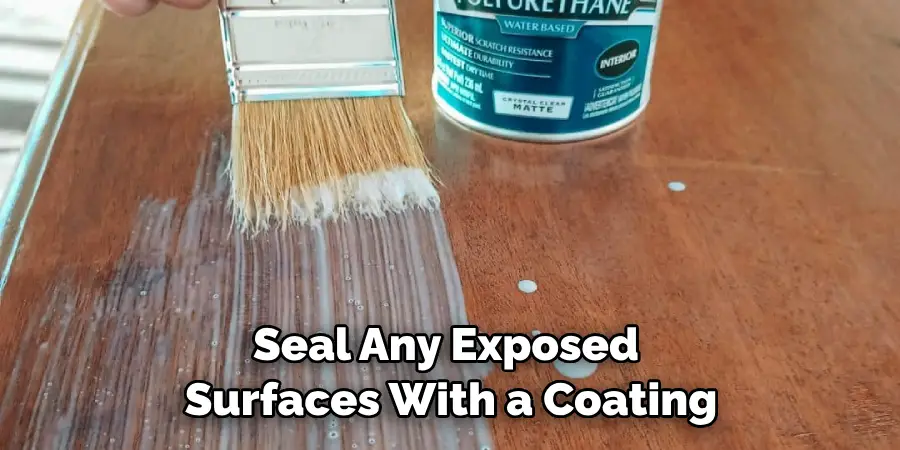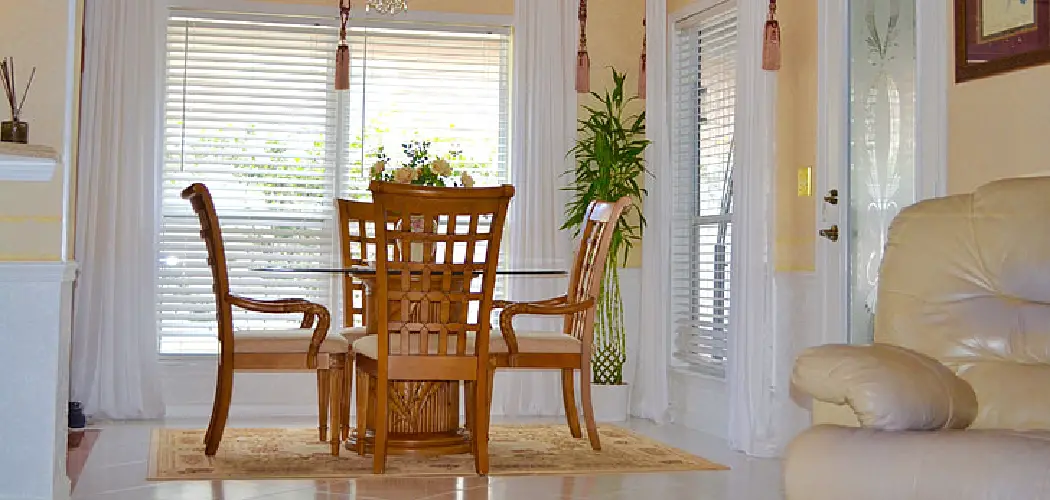Wood is a natural material that can be a great addition to your home. However, when it comes to bringing wood indoors, there are some important steps you need to take in order to protect your furniture and flooring from potential damage.

Treating the wood before you bring it inside will help the wood look better longer, reduce the risk of introducing unwanted pests and pollutants into your home, and ensure that it will last for many years to come.
In the long-term, treating wood before bringing it indoors is a key part of maintaining its integrity and ensuring its longevity. In general, this process includes removing dirt from the wood surface and applying a protective finish to prevent pests from infesting or damaging the material.
Additionally, finishing treatments can help seal out moisture which can cause warping, splitting and other potential damage to the wood. You can find step-by-step instructions on how to treat wood before bringing indoors in this blog article.
Step by Step Instructions for Treating Wood Before Bringing Indoors
Step 1: Preparing the Wood
Before you can treat the wood, it needs to be properly prepared. Sand down any rough edges and remove any dirt or debris from the surface of the wood. Inspect the wood to make sure there are no signs of rot, water damage, or insect infestation. It’s important not to bring this type of wood into your home as it can cause a variety of issues.
Step 2: Seal the Wood

Now that you have inspected and prepared the wood, you can begin sealing the wood. It’s important that you use a good quality sealant specifically designed for indoor use. Once you’ve selected your desired sealant, it’s time to apply it to the wood. Start at one end of the piece and work your way across, making sure to cover each surface evenly and thoroughly.
Step 3: Let the Sealant Dry
Allow the sealant to dry completely before bringing it indoors. This can take anywhere from a few hours to overnight, depending on the type of sealant that you are using. Once the sealant is dry, use a sandpaper to smooth down any rough edges or patches. This will ensure that the wood is smooth and ready to be brought indoors.
Step 4: Vacuum Any Residue
After sanding, vacuum up any dust and debris that may have been left behind. This will prevent it from getting inside your home and causing issues. If desired, you can also apply a stain or paint to the wood before bringing it indoors. This gives the wood an additional layer of protection from dirt and other contaminants.
Step 5: Allow the Stain/Paint to Dry
Allow the stain or paint to dry completely before bringing it indoors. This will help ensure that it is far less likely to come off and cause damage inside your home. Once all of the steps have been followed, you can bring the treated wood into your home.
In addition to treating wood before bringing it indoors, be sure to clean the wood on a regular basis. By using a mild cleaner and soft cloth, you can keep your furniture looking great for years to come. Regularly vacuuming and dusting will also help protect the wood from dirt and contaminants.

Safety Precautions for How to Treat Wood Before Bringing Indoors
- Always wear safety goggles and gloves when treating wood.
- Make sure the area you are working in is well ventilated and free of dust or other particles.
- Wear a respirator mask to protect from fumes given off by sealants or paints.
- Read and follow all instructions for any product you use on the wood before beginning.
- Work slowly, taking your time to make sure the wood is evenly treated and completely covered.
- Dispose of any materials used in treating the wood in a safe and responsible manner.
- Ensure that all sealants, stains and paints are specifically designed for indoor use.
By following these safety precautions along with the ten step by step instructions above, you can ensure that the wood is treated properly and safely before bringing it indoors. This will help protect your family, home and furnishings from any potential damage or contamination.
Should You Clean or Sand the Surface of the Wood Before Treating It?
When it comes to treating wood before bringing indoors, most experts agree that the surface should be cleaned and lightly sanded. This helps remove dirt, grime, and other contaminants that could interfere with the treatment process. Make sure to always use a damp cloth or brush when cleaning and never use any harsh chemicals or scrubbing pads as these can damage the wood’s finish.

If the wood is very rough or warped, then sanding it with fine-grit sandpaper should be done before applying any type of treatment. This will help to smooth out the surface and make it easier to apply the treatment evenly.
Be sure to wear a dust mask when sanding as particles can be hazardous if inhaled. It is important to remember that any type of treatment should be applied to clean, dry wood. If the wood is damp or wet, it will not absorb the treatment properly and could result in an uneven finish or discoloration.
What is the Best Way to Store Treated Wood in an Indoor Environment?
When storing treated wood indoors, it is important to take certain precautions. First, make sure you store your wood in an area that gets plenty of circulation and ventilation; this will help ensure that no dampness or moisture can accumulate on the wood surface.
Additionally, consider using a sealer or paint for extra protection against humidity and water damage. Finally, if possible, try to store the wood on a pallet or another raised surface to keep it off the ground and minimize contact with potential sources of moisture.
Are There Any Environmental Issues You Should Be Aware of When Treating Wood for Indoor Use?
Treated wood is often treated with chemicals such as arsenic, chromium, and copper to make the wood resistant to rot, insects, and other damage. While these treatments may be beneficial outdoors, they can be a hazard indoors when inhaled or absorbed through the skin. Therefore, it’s important to take extra precautions when working with treated wood for indoor use.
When sanding or sawing treated wood, wear a dust mask to prevent inhalation of the particles. When using treated wood indoors, try to seal it with a coating that will limit the release of any dangerous chemicals from the wood. Finally, make sure to wash your hands after handling any treated wood and never allow children or pets to come in contact with untreated wood.
Are There Any Health Risks Associated With Treated Wood in an Indoor Environment?
Treated wood contains chemicals that can be hazardous to humans and animals when inhaled or absorbed through the skin. This means it is important to take extra precautions when working with treated wood indoors.
Proper ventilation, wearing a certified dust mask, using gloves, and washing hands after handling are all necessary steps for minimizing any potential health risks associated with treated wood in an indoor environment.

Additionally, it is best to limit the amount of treated wood that is used in the indoor environment and seal any exposed surfaces with a coating that will limit the release of any dangerous chemicals from the wood. By taking these steps, you can ensure a safe and healthy environment indoors when using treated wood.
Are There Any Long Term Maintenance Considerations When Using Treated Wood Indoors?
When bringing treated wood indoors, there are several maintenance considerations to keep in mind. Treated wood should always be sealed and painted or stained to protect it from water damage. This will help preserve the wood’s longevity and ensure that no chemicals from the treatment leach into your indoor environment.
Additionally, when sanding down treated wood, a dust mask should be worn to avoid breathing in any of the toxins associated with treated wood. Finally, it is important to regularly inspect the treated wood for signs of cracking or warping and make any necessary repairs. Taking these precautions will help ensure that your treated wood remains in good condition for years to come.
Conclusion
In conclusion, treating wood before bringing indoors is an important step in order to ensure the longevity and durability of your wooden furniture.
The process involves cleaning the wood, sanding it down with a belt sander, sealing it with polyurethane or another sealant, and finally staining or painting it for additional protection and aesthetics. Following these steps will help protect your wooden furniture from dust, dirt, and other damage.
By taking the time to properly treat wood before bringing it into your home, you will be able to enjoy your furniture for years without worrying about costly repairs or replacements. I hope this article has been beneficial for learning how to treat wood before bringing indoors. Make Sure the precautionary measures are followed chronologically.

